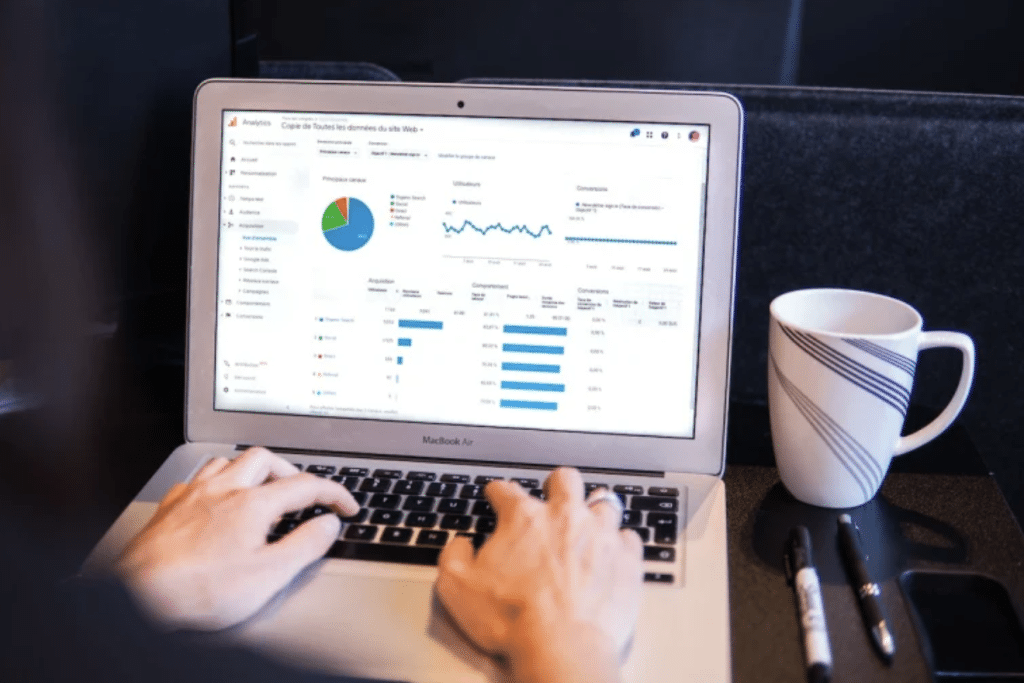Marketing, in its simplest form, is the practice of reaching potential customers and persuading them to buy your product or service. Traditionally, marketers relied on observational data, surveys, and demographic studies to understand consumer behavior. While these methods are valuable, they only provide a snapshot of the past and present, offering limited insight into future actions.
What is Predictive Marketing?
A leap forward from traditional methods, predictive marketing introduces the capability to predict future customer actions. Leveraging data analytics and machine learning, predictive marketing analytics allows marketers to anticipate customer needs, preferences, and behaviors. It’s like having a crystal ball that helps foresee market trends and customer responses. By dissecting patterns and identifying potential outcomes, marketers can refine their strategies and create tailor-made solutions for their target audience.
Predictive marketing takes us from a reactive approach to a proactive one, where we can predict and shape future outcomes rather than merely react to past events. As we step into an era where data-driven strategies rule, predictive marketing is becoming a fundamental tool for businesses aiming to stay competitive. It would be a shell without data analytics and machine learning. Predictive analytics in marketing involves collecting and analyzing data to identify patterns, trends, and relationships, while machine learning models use these patterns to predict future outcomes. The symbiosis of these two techniques has given birth to a powerful marketing tool.
Unveiling Predictive Marketing Models
The following models are the cogs and wheels inside the machinery of predictive marketing. They offer distinctive capabilities, like real-time analysis, forecasting future behavior, and developing personalized marketing strategies.
Real-Time Analysis
This allows businesses to adapt their strategies based on current trends. They no longer have to wait for quarterly reports to modify their approach. Instead, they can make informed decisions in real-time, ensuring optimal results.
Forecasting Future Behavior
With the power of predictive analytics for marketing, businesses can forecast consumer behavior. This foresight enables them to prepare in advance, tailoring their marketing strategies to the predicted customer responses.
Personalized Marketing Strategies
By understanding customers’ behaviors, preferences, and needs, marketers can create personalized strategies. These tailor-made plans help in capturing the customer’s attention, enhancing their experience, and fostering their loyalty.
The Practical Advantages of Predictive Marketing
The benefits of predictive marketing extend beyond understanding customer behavior. They offer practical advantages that can dramatically improve your business performance.
Targeted Customer Engagement
Predictive marketing helps businesses engage with customers on a personal level. It enables marketers to deliver relevant content, products, or services to the right customer at the right time, enhancing engagement rates.
Enhanced Customer Retention
Analytics in predictive marketing can identify at-risk customers before they churn, providing an opportunity to intervene with strategies aimed at retaining them.
Increased ROI
By leveraging software for predictive analytics, businesses can reduce wasted marketing expenditure on less promising prospects and focus on those likely to convert, significantly increasing return on investment (ROI).
Implementing Predictive Marketing in Your Business
To implement predictive marketing in your business, you need a well-planned approach that encompasses various stages. From data collection to choosing the right model and conducting the analysis process, each step plays a vital role in harnessing the power of predictive marketing to drive your business forward.
Data Collection
Collecting quality data is the foundation of effective predictive marketing. It’s important to gather a wide range of data, including demographic information, purchasing history, and online activity. This data provides valuable insights into customer behavior, preferences, and patterns, which can help you identify trends and make informed predictions.
Choosing the Right Model
Selecting the right predictive model is crucial. Different models serve different purposes, so it’s important to select one that aligns with your specific business objectives. There are various models available, such as regression, decision trees, neural networks, and ensemble methods. Each model has its strengths and weaknesses, and understanding them will help you make an informed decision.
Analysis Process
Once the data is collected and the model is chosen, the analysis begins. The data is fed into the model, which then generates predictions that can guide your marketing strategies. During the analysis process, it’s essential to ensure the accuracy and reliability of the predictions. This involves evaluating the model’s performance, conducting tests, and refining the model as needed.
The Role of Businesses in Shaping Customer Behavior
In today’s data-driven era, businesses are not just passive observers but active participants in shaping customer behavior. Through informed decision-making, businesses can influence market trends, creating a virtuous cycle that benefits both the company and its customers. With access to vast amounts of data and advanced analytics tools, companies can uncover valuable insights into consumer preferences, purchasing patterns, and emerging trends. Armed with this knowledge, businesses can develop targeted marketing campaigns, personalized product recommendations, and tailored customer experiences that resonate with their target audience.
By proactively shaping customer behavior, companies can foster brand loyalty, increase customer satisfaction, and drive revenue growth. Moreover, businesses can leverage their understanding of consumer behavior to anticipate market shifts and adapt their strategies accordingly, staying ahead of the competition. This proactive approach enables businesses to continuously refine their offerings, deliver exceptional customer experiences, and maintain a competitive edge in the ever-evolving marketplace.
Predictive marketing is revolutionizing the marketing landscape. By leveraging predictive analytics, businesses can not only understand their customers better but also anticipate their future actions, helping them to deliver a personalized and satisfying customer experience. As we move forward in the age of data, predictive marketing is set to become an indispensable tool in every marketer’s toolkit.

